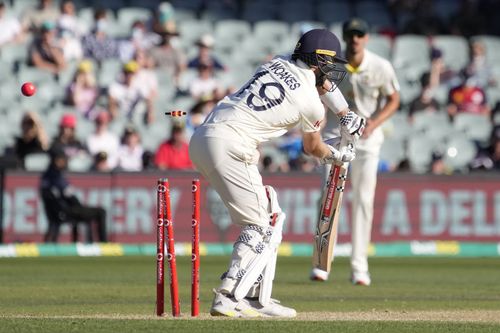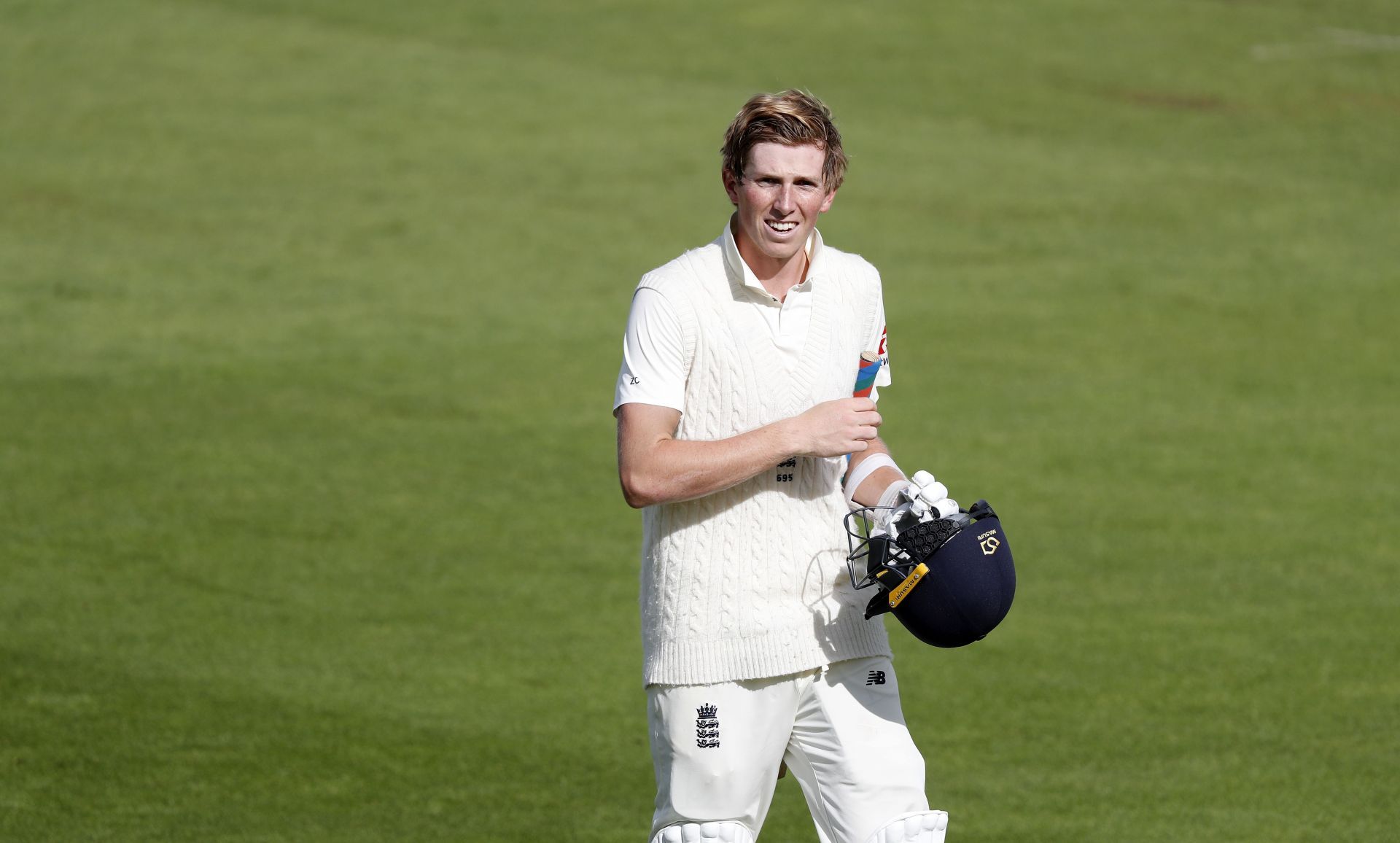
Solutions to England's batting crisis may lie within

As Day 5 of the pink-ball Test between Australia and England dawned, the Three Lions faithful began consigning themselves to a fate that has become a recurring theme. England, courtesy of another shambolic batting display in the first innings, found themselves chasing the game, with that pursuit quickly turning into a battle of survival on the final day.
To be fair to the Three Lions, they made quite a fist of it. They batted through two sessions and had the rub of the green gone their way, they could’ve prolonged Australia’s attrition a lot more. Yet, it didn’t, meaning that the batting pandora’s box has been carved open for the umpteenth time this season.
In the aftermath of the game at the Adelaide Oval, plenty have been quick to criticize England’s selection calls. To an extent, those aren’t baseless, considering England played four fast bowlers – each of whom could act as a clone to the other on any given day.
The only pacer who could’ve been a point of difference (read Mark Wood) was cooling his heels and “resting”, even as he was chomping at the bit to get stuck into Australia. Having said that, England can at least take heart from the fact that they have alternatives they can turn to in the bowling department.
On the batting front, things are miserable and there are simply no two ways about it. Every batter they’ve tried to back in 2021 has provided evidence on why the Three Lions would’ve been better off not placing their trust in them.
And, if that wasn’t enough, they’ve failed so many times that English cricket fans are now resigned to batting collapses. Not just resigned, they refuse from celebrating batting feats because, well, they know that it is going to be a precursor for impending doom.
In the current iteration of the Ashes, no England batter not named Dawid Malan or Joe Root has crossed 50-run barrier. Chris Woakes came closest at Adelaide with a well-compiled 44 in the second innings. But with him not picking wickets – his primary responsibility, he might not be able to add to his tally henceforth.
Ben Stokes and Jos Buttler have showcased tremendous reserves of patience and perseverance. However, both have inevitably entered situations where restoring parity is the priority, rather than waltzing into circumstances where grabbing the games by the scruff of the neck is an option.
England's openers have failed miserably in the Ashes
The biggest problem, though, is at the top of the order, where Messrs. Haseeb Hameed and Rory Burns haven’t been able to buy a run. Both have been perfect as far as their idiosyncrasies are concerned. But, as both have also found out, that is hardly a guarantee of scoring international runs.
Since the capitulation at Adelaide, there have been murmurs that England want to juggle their opening act. While that isn’t unsurprising, the troubling bit is that England are having to choose between a rock and a hard place, because well, those in contention to replace Burns and Hameed have pretty woeful numbers too.
Jonny Bairstow – a cricketer England’s Test team only remembers when in crisis, averages a healthy 25.07 in Test cricket this year. He has scored a fifty though (against India).
Zak Crawley – one of the brightest batting talents England has seen in the recent past, averages a tick over 11 in 2021. Crawley has scored 156 runs in 14 innings, of which 53 came in a solitary knock against India at Ahmedabad. For those with a mathematical inclination, that tallies to 103 runs in 13 essays at an average of 7.92.

However, there is a spin to this story – a spin that England would do well to identify. Not just because it could be a massively persuasive factor, but also because they might have reached a point of no return with the batters who featured at Adelaide.
Both Bairstow and Crawley can be genuine match-winners in Test cricket, irrespective of what the recent statistics suggest. Bairstow, lest we forget, has six Test hundreds and has scored them in different countries and in challenging conditions. His technique has left a bit to be desired lately but if he can establish a foothold, he can take the game away from the opposition.
Crawley, too, hasn’t frequently set the world alight in his nascent Test career. But when he did (against Pakistan in 2020), he notched up a 250-plus total – an essay that was indicative of his talent and proved that he can, in contrast to recent perceptions, hold his own in international cricket.
In fact, when Malan was recalled into the fold during the home series against India, he hadn’t been plundering runs in domestic cricket. While that pre-requisite has anyway been rendered redundant by some of the corresponding numbers other England batters have produced, Malan’s record didn’t exactly make the rest of the country sit up and take notice.
Between 27th April, 2019 and 31st July 2021, Malan scored 2407 runs in 58 innings. His average during that period, was just a tick under 43 (42.98), which compared to what batters of other nations produce before making their international debut/comeback, isn’t a lot.
What he did do right, though, was he made his starts count. He only had seven hundreds during the aforementioned phase. Yet, he scored more than 150 in five of those, hinting that he can single-handedly win games for his side – something that he shares in common with Bairstow and Crawley.
Moreover, teams around the planet have had success converting their ODI opening batters into Test openers. Rohit Sharma’s ascent to the top is a perfect case in point. England, too, tried to jump onto that bandwagon when Jason Roy was thrust into the fold during the 2019 Ashes.
And, with the kind of displays Roy put together and the ones Burns and Hameed have been producing, Bairstow can’t fare any worse, can he?
He is one of the greatest ODI batters to have ever donned an England shirt and though fortunes have wavered in red-ball cricket, there is something he must be doing right to continue ransacking runs in other formats of international cricket.
Another avenue England could explore is pushing Dawid Malan up to open. The left-handed batter doesn’t have much experience of doing so in Test cricket but he is anyway functioning as an opener in Burns and Hameed’s presence.
If that were to happen, Ben Stokes – arguably one of England’s best defensive batters, could assume a greater batting role at No.3, with Root shepherding the likes of Bairstow, Buttler and Ollie Pope lower down the order.
Hence, despite the prevailing notions, there are options that England can explore. Again, it is no guarantee that these will work. Yet, when considering how their current set-up has operated, it is certainly worth a try.
At this moment, England’s batting has hit rock-bottom. They are finding ways to invite collapses, tempting fate when they are batting well and most importantly, giving out signals to the opposition and the rest of the world that they don’t know that they are doing.
The flip side to this argument, however, is that there is only one trajectory that England can realistically traverse – upwards. From that perspective, maybe the solutions to their batting crisis lie within.
The telling question, though, is whether they are brave, courageous or funky enough (based on your allegiances) to commit to it completely.